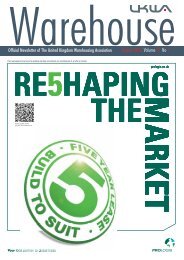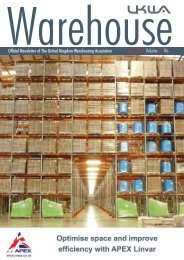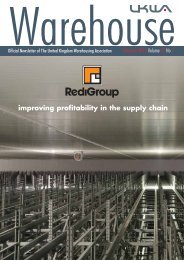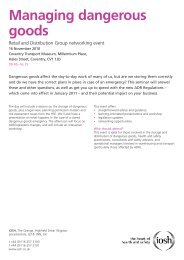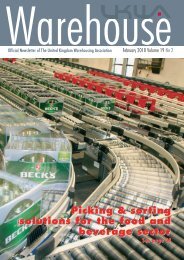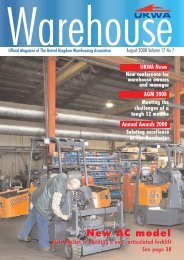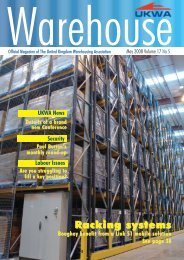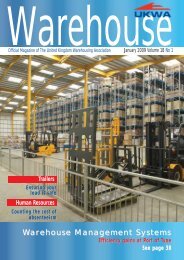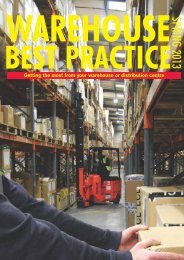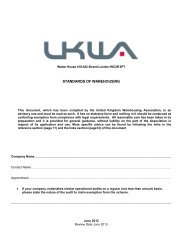ifwla - Warehousing and Logistics International
ifwla - Warehousing and Logistics International
ifwla - Warehousing and Logistics International
- No tags were found...
You also want an ePaper? Increase the reach of your titles
YUMPU automatically turns print PDFs into web optimized ePapers that Google loves.
Cover Story 31once done by pen <strong>and</strong> paper whilst automated materialh<strong>and</strong>ling <strong>and</strong> more recently autonomous robotic systemshave quite literally been taking much of the legwork out of picker’s jobs.In April this year, UK retailer John Lewis reported significantgrowth in its online sales thanks in no smallpart to efficiencies achieved through the automation ofits main distribution centre in Milton Keynes.Though battery powered minions navigatingamongst the racks <strong>and</strong> pallets like the “Scutters” fromRed Dwarf is a visually impressive demonstration of theadvance of logistics technology, the most significantadvances as a far as the industry is concerned are lesstangible. An effective Warehouse Management System(WMS) is vital to the functioning of a modern logisticscentre. A lean logistics strategy obligates logistics servicesproviders to place more <strong>and</strong> more reliance on technologicalapproaches to optimising their processes. Theimperative to minimise waste <strong>and</strong> inefficiency dem<strong>and</strong>sa single picture of both in-bound <strong>and</strong> out-bound logistics.Thus in the context of market conditions that makea lean logistics strategy all but obligatory, an integratedwarehouse management system looks less a luxury thanan asset without which the physical infrastructure itself iscommercially moribund.The four major benefits of an integrated WMS are:(1) Client Visibility.Freight often moves through a network of one or manysupply chains where the warehouse serves as just onecomponent of the network. Having an integrated WMSallows clients complete visibility of their freight as itmoves from one entity to the next; for example fromWarehouse to Forwarding.(2) Planning.If the Warehouse has visibility of pending receipts, forexample through access to an <strong>International</strong> ForwardingPurchase Order module, the warehouse can better planreceiving resources <strong>and</strong> space for more efficient processing.(3) Lower cost to implement <strong>and</strong> train.With a single system approach Warehouses don’t needto externally source essential or value add modules forfunctions such as: Accounting, Workflow, DocumentManagement <strong>and</strong> Customer Relations Management.They do not need to learn, run <strong>and</strong> manage a myriadof different systems often requiring different hardware<strong>and</strong> configurations. This saves considerable costs inunnecessary IT overheads such as training <strong>and</strong> hardware.(4) Departments can be centralised for the<strong>Logistics</strong> Service Provider.You no longer need a separate department forWarehouse Customer Service, data entry or Sales.These functions can be consolidated with a single systemapproach. This allows for one Customer Service orData Entry department using one system with visibility toall the information they need to make decisions for thegood of the entire business.Pick the right systemIt is of course important to pick the WMS solution thatis right for your business. Like any procurement decisionit should be taken at the boardroom level, able togrow with you as your business enters new markets <strong>and</strong>the challenges that come with it. Most importantly, thosewho will be using the system must be trained to extractthe maximum value from it.The ROI from a well-chosen <strong>and</strong> implemented WMScan be dramatic <strong>and</strong> swift. One recent UK adopter ofwww.warehousinglogisticsinternational.comIssue No.3




